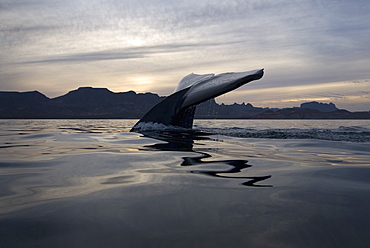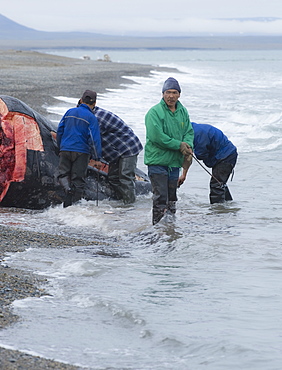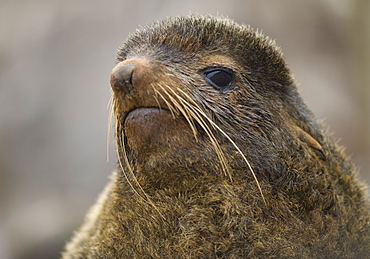Recent searches
Loading...
1012-105 - Whale Shark & snorkeler. Ningaloo, Australia
1012-106 - Whale Shark & snorkeler. Ningaloo, Australia
1012-77 - Short-finned Pilot Whale (Globicephala macrorhynchus) & whale-watchers. It is by law that whale watchers should stay at least 50meters (150 feet) away from large whales, including Pilot Whale (in picture here). Unless special in-water permits are given, snorkelers can only swim with smaller dolphins, but not big whales. Azores, Portugal, Atlantic.
1012-88 - Sorpionfish, Soft Coral, Glassy Sweepers & diver. Myanmar (Burma)
1012-72 - Schooling Manta Rays & Diver. Raja Ampat, Papua, Indonesia.
1036-292 - Bottlenose dolphins (Tursiops truncatus) nursery group of lots of young. Walker Bay, South Africa
1012-33 - Great Barracuda & diver. Kapalai Island, Malaysia
1012-76 - Pacific White-side Dolpin & spectator. Stanley Park, Vancouver, Canada
1012-66 - Leather Bass, Artificial Reef & diver. Mabul Island, Malaysia
1012-31 - Bahamas, Atlantic Ocean Spotted Dolphins, Stenella frontalis. Bahamas, Atlantic Ocean
907-8 - Southern Right Whale (Eubalaena australis) mother and calf. The Cape, South Africa
1012-32 - Great Barracuda & diver. Kapalai Island, Malaysia
1012-107 - Whale shark. Growing over 17m in length, despite it is th largest fish of the world, scientists still do not know a lot about the Whale Shark, such as where they migrate to, why divers don't see the free swimming babies, etc. Here, a bunch of divers may be a bit too close to the 8m long shark. By regulations in Ningaloo, swimmers have to be 3 meter from the whale shark. Ningaloo Reef, Western Australia
1012-44 - Caribbean Reef Shark & diver. Bahamas, Atlantic Ocean
1012-38 - Broadclub Cuttlefish and diver. Kapalai Island, Malaysia
1012-64 - Hawksbill Turtle & diver. Kapalai Island, Malaysia
1012-69 - Manatee & people on boat. Split shot. Homossassa, Florida, USA
1036-295 - Bottlenose dolphins (Tursiops truncatus) nursery group of lots of young. Walker Bay, South Africa
1036-294 - Bottlenose dolphins (Tursiops truncatus) nursery group of lots of young. Walker Bay, South Africa
1036-293 - Bottlenose dolphins (Tursiops truncatus) nursery group of lots of young. Walker Bay, South Africa
931-455 - Humpback whale (megaptera novaeangliae) A lobtailing humpback whale. Gulf of California.
934-175 - Silhouette of diver behind school of glass fish
917-235 - Antarctic Fur Seal mother and pup, Arctocephalus gazella, South Georgia, South Atlantic Ocean.
931-200 - Common dolphins (delphinus delphis) Gulf of California.A very young common dolphin with its mother.
931-183 - Humpback whale (megaptera novaeangliae) Gulf of California. A humpback whale throws its tail stock aloft as it starts lobtailing.
915-746 - Whale Shark , Rhincodon typus, Mahe, Seychelles, Indian Ocean
915-676 - Spider crab underwater, Maja squinado, Pembrokeshire, Wales, UK
915-719 - Shoal of Lattice soldierfish ( Myripristis violacea ), Mahe, Seychelles, Indian Ocean
931-333 - Fin whale (balaenoptera physalus) The blow of a fin whale. Gulf of California.
931-456 - Humpback whale (megaptera novaeangliae) A breaching humpback whale. Gulf of California.
917-215 - Rough-toothed Dolphin, Steno bredanensis, surfacing, Costa Rica, Pacific Ocean. This species can be identified by itÃs sloping forehead & white ëlipsë.
931-258 - Short finned pilot whale (globicephala macrorynchus)The bizarre refelctions of the seas surface and a young pilot whale. Canary Islands.
931-317 - Common dolphin (delphinus delphis) A common dolphin. Gulf of California.
917-402 - Humpback Whales (Megaptera novaeangliae) lunge-feeding on Krill. Monterey, California, Pacific Ocean. MORE INFO: Baleen Plates are visible on the top jaw & Krill can be seen escaping from the animals mouths.
931-213 - Humpback whale (megaptera novaeangliae) Gulf of California.A humpback whale tail.
931-322 - Common dolphin (delphinus delphis) Common dolphins at high speed.Gulf of California.
917-380 - Atlantic Spotted Dolphin (Stenella frontalis) three animals breach simultaneously. Azores, Atlantic Ocean.
931-325 - Blue whale (balaenoptera musculus) A close up view of a blue whale blow.The Gulf of California.
931-397 - Whale shark (rincodon typus) A swimmer with a whale shark.Gulf of California
917-357 - Blue Whale (Balaenoptera Musculus) breaching, extremely rare unusual image. Monterey, California, Pacific Ocean. MORE INFO: This Blue Whale was engaging in courting/fighting behaviour with another Blue Whale. Both animals were moving much faster than normal, chasing each other, & breaching repeatedly.
917-199 - Adult Central American Spinner Dolphin, Stenella longirostris centroamericana, porpoising, Costa Rica, Pacific Ocean.
931-297 - Brydes whale (balaenoptera edeni) A lunging Brydes whale.Gulf of California.
917-45 - Spinner Dolphin (Stenella Longirostris). Azores, North Atlantic
917-156 - Central American Spinner Dolphins, Stenella longirostris centroamericana, spinning in unison, Costa Rica, Pacific Ocean.
931-204 - Sperm whale (physeter macrocephalus) Gulf of California.A sperm whale tail.
917-211 - Central American Spinner Dolphin, Stenella longirostris centroamericana, porpoising, Costa Rica, Pacific Ocean.
1067-62 - Broadclub cuttlefish, Sepia latimanus. This cephalopod species is highly adept at both color and texture change. Buyat Bay, North Sulawesi, Indonesia, Pacific Ocean.
915-216 - Bass (Dicentrarchus labrax) Pembrokeshire, Wales, Animal Abstract (rr)
995-292 - Grey Seal (Halichoerus grypus) female in surf waves crashing over head. . Mull of Kintyre near Campbeltown, Argyll, Scotland, UK
931-192 - Humpback whale (megaptera novaeangliae) Gulf of California.The splash made by a breaching humpback.
931-440 - Short finned pilot whale (globicephala macrocephalus) A curious young pilot whale hanging beside it's mother. Canary Islands
915-777 - Whale shark researcher and Whale Shark , Rhincodon typus, Mahe, Seychelles, Indian Ocean
931-358 - Short finned pilot whales (globicephala macrocephalus) Pilot whal sin the low light of dawn. Gulf of California.
931-308 - Sperm whale (physeter macrocephalus) A sperm whale head and wave. The Gulf of California.
931-194 - Humpback whale (megaptera novaeangliae) Gulf of California. Like a dancer, a breaching humpback whale.
915-790 - Whale Shark , Rhincodon typus, Mahe, Seychelles, Indian Ocean
915-711 - Harlequin nudibranch ( Phyllidia varicosa ), Mahe, Seychelles, Indian Ocean (rr)
931-225 - Common dolphin (delphinus delphis) Gulf of California.A group of common dolphins in a hurry.
917-323 - Needle Fish Species (scientific name unknown) unusual, leaping to avoid a predator, note the trail on the surface of the water made by its tail. Maldives, Indian Ocean.
931-362 - Blue whale (balaenoptera musculus) A blue whale passes beside a tourist boat. Gulf of California.
931-355 - Blue whale (balaenoptera musculus) The tail of a diving blue whale in a silky sea. Gulf of California.
915-760 - Scuba diver and Green sea turtle ( Chelonia mydas ), Sipadan, Sabah, Malaysia, Borneo, South-east Asia (rr)
917-185 - Humpback Whale, Megaptera novaeangliae, Costa Rica, Pacific Ocean.
917-219 - Rough-toothed Dolphin, Steno bredanensis, surfacing with part of a Dorado, Coryphaena hippurus, in itÃs mouth, Costa Rica, Pacific Ocean. This species of Dolphin is known to prey on large fish such as Dorado.
917-407 - Flying Squid Species in mid-air (Ommastrephes bartramii). Extremely rare unusual image. South Atlantic Ocean. MORE INFO: Flying Squid use membranes between their tentacles (visible on pic) & two fins at the rear of the mantle to glide through the air in a similar way to flying fish. These unique adaptations allow them to avoid predation more easily. Ommastrephid squids are among the strongest swimmers in the Cephalopoda. A number of species are fished commercially. This particular species (Ommastrephes bartramii), is commonly known as "Neon Flying Squid" due to its colouration and its ability to glide over the ocean surface as seen in the photographs. Please note that this is a genuine image of a wild animal in its natural environment. It is not a digital manipulation.
1067-48 - Painted frogfish, Antennarius pictus. Highly variable in color, this species often grows scab-like patches on its body for camouflage. Lembeh Strait, North Sulawesi, Indonesia, Pacific Ocean.
931-410 - Risso's dolphins. (Grampus griseus)A Risso's dolphin surfaces in an oily sea. Azores.
921-1079 - Masked Butterflyfish (Chaetodon Semilarvatus) Under water , diving, Hurghada, Red Sea, Egypt, Africa.
1067-40 - Manta ray (Manta birostris) Juvenile animal swimming near the surface. Raja Ampat, Papua, Indonesia, Pacific Ocean. More info: This is the largest of all ray species.
921-819 - Inuit Settlement with locals cutting large slabs of whale meat from a freshly caught Grey whale, Lorino Village (Chukotskiy Peninsular) Russia, Asia.
931-383 - Humpback whale (megaptera novaeangliae) A breaching humpback whale. Gulf of California.
915-801 - Caprellid amphipod on hydroid, Nolton Haven, Pembrokeshire, Wales, UK, Europe
917-158 - Central American Spinner Dolphin, Stenella longirostris centroamericana, spinning with small Remora attached, Costa Rica, Pacific Ocean.
931-338 - Humpback whale (megaptera novaeangliae)A lobtailing humpback. South Pacific
921-824 - Wild female Northern Fur seal (Callorhinus ursinus), Endangered, rookery, haul out, Colony, Tyuleniy Island (Bering Sea), Russia, Asia
931-265 - Short finned pilot whale (globicephala macrorynchus) A group of pilot whales with bubbles rising in the background. Canary Islands.
921-766 - Wild Adult Male and Female, Steller sea lions (Eumetopias jubatus), endangered, colony, rookery, haul out, raft, above water. Bering Islands (Bering Sea) Russia, Asia. MORE INFO: This sea lion in the largest member of the eared seals.
915-691 - Scissortail sergeant ( Abudefduf sexfasciatus ), Mahe, Seychelles, Indian Ocean
1067-8 - Soft corals (Dendronephthya spp.) growing on diverse coral reef. Komodo, Indonesia, Pacific Ocean.



































































































